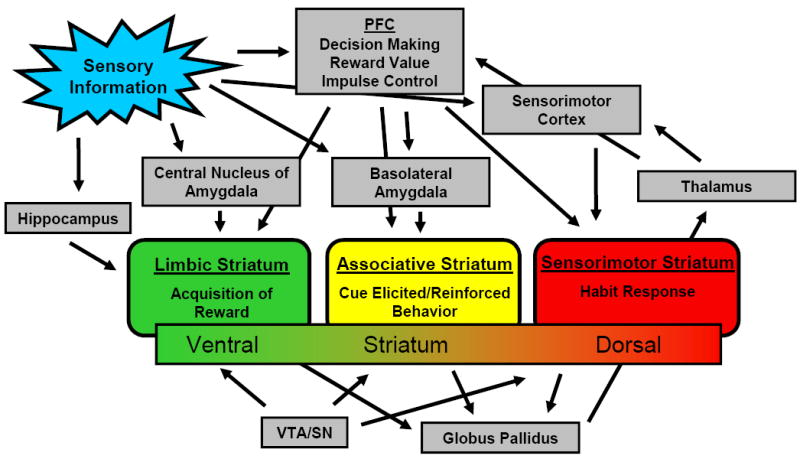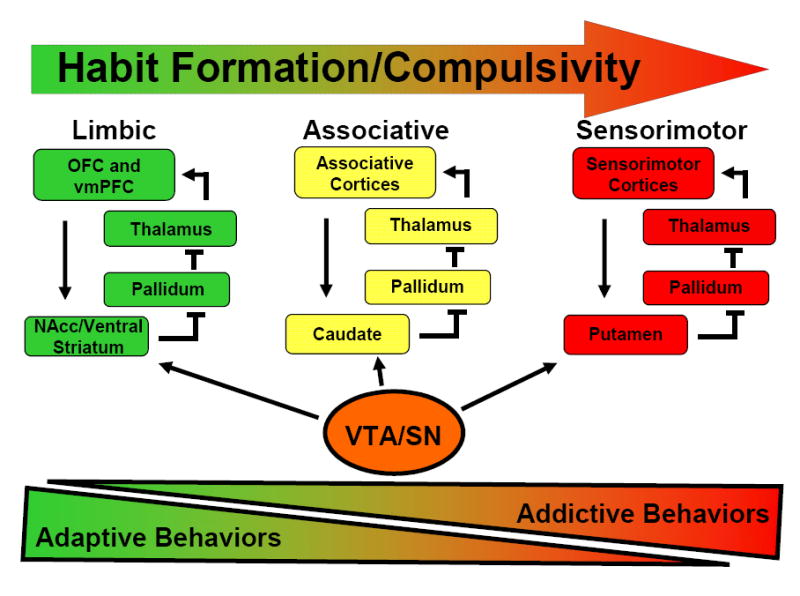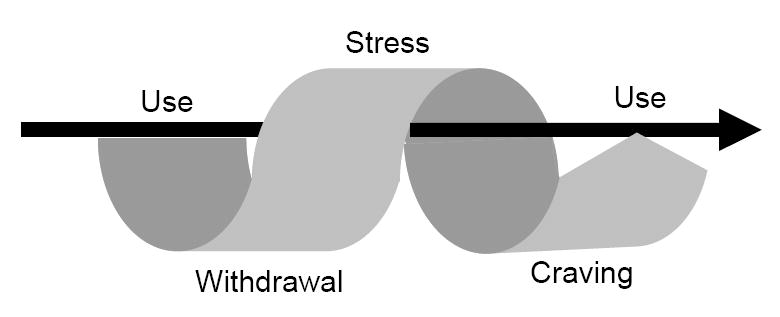Figure 1.



a: Brain circuitry implicated in addiction. PFC = prefrontal cortex, VTA = ventral tegmental area, SN = substantia nigra, NAcc = nucleus accumbens, OFC = orbitofrontal cortex
b. Transition of activation of different corticostriatal networks with the formation of habit. Different colors reflect distinct corticostriatal circuits that underlie motivated and habitual behavior. The multicolored arrow represents the shift in involvement of these circuits as behavior becomes more habitual or compulsive in nature. Bottom triangles reflect hypothesized proportions of the motivational behavior repertoire that are devoted to adaptive and addictive behaviors respectively, as involvement of more dorsal striatal circuits become more prominent and addictive behaviors become more severe.
c. Habit formation in Addiction. Habit formation in addiction progression with cyclical arrow representing pattern of behaviors posited as central to the addictive process [178]. Straight arrow represents transition from acquisition to habitual/compulsive behaviors in addiction formation.
